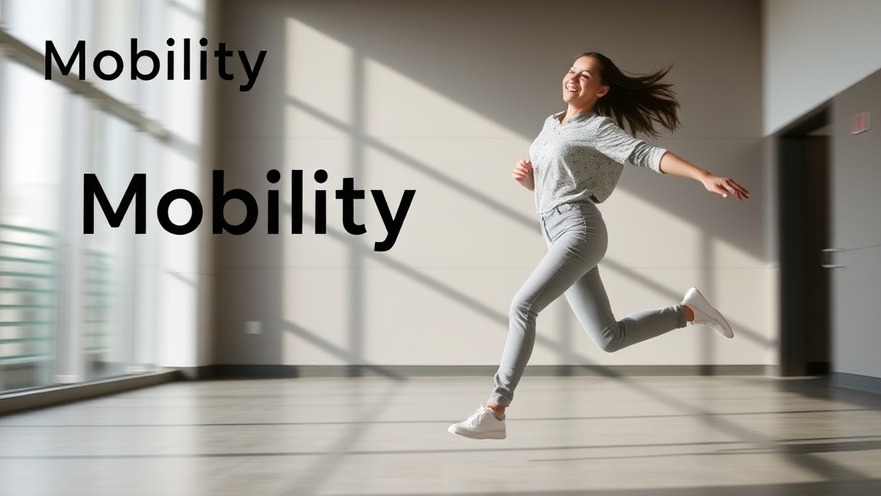
Understanding Mobility's Role in Pain Management
Mobility is often overlooked as a crucial element in health and fitness, yet it plays a vital role in alleviating calf, foot, and knee pain. Many adults suffer silently, believing that discomfort is a normal part of aging or inactivity. However, a lack of mobility often leads to muscle stiffness and joint pain, signaling that it's time to reassess our movement practices. By embracing mobility exercises, we can improve flexibility, enhance circulation, and ultimately alleviate pain.
In the video below titled 'Calf, Foot, and Knee Pain Because of the Lack of Mobility,' try my 3D method; the discussion dives into the critical role of mobility in managing pain, prompting a deeper analysis of its implications for our overall health.
The 3D Method: A Path to Pain Relief
The video above titled Calf, foot, and knee pain because of the lack of mobility. Try my 3D Method introduces a revolutionary approach to address these common issues. The 3D Method focuses on three dimensions of movement: movement patterns, muscle engagement, and breath control. By integrating these aspects, individuals can create a balanced routine that encourages strength and flexibility in their lower body, reducing discomfort significantly.
Real Stories: Testimonials on Transformation
Consider the journey of Anna, a 58-year-old who struggled with persistent knee pain. After attending classes centered around the 3D Method, she found not just relief but also regained mobility she thought was lost forever. "I never realized how much I had limited myself. With these exercises, my knees feel stronger, and I can play with my grandchildren again," she shares.
Practical Tips for Incorporating Mobility Exercises
Getting started with mobility exercises can feel daunting, but it doesn't have to be. Here are some practical tips to ease you into a routine:
Start Slow: Whether you’re new to fitness or getting back into it, begin with exercises that are gentle on joints, such as ankle circles or gentle calf stretches.
Consistency is Key: Aim for at least 10-15 minutes of mobility exercises daily to see gradual improvements.
Listen to Your Body: Pay attention to how each exercise feels. If something causes pain, stop and consult with a professional.
Exploring Alternatives to Traditional Fitness
In a society where traditional workouts can become monotonous or intimidating, the 3D Method represents an inclusive approach to fitness that invites individuals of all ages to explore alternatives more suited to their needs. This method not only grounds itself in scientific understanding but also recognizes the importance of adapting exercises to individual capabilities and preferences.
Frequently Asked Questions About Mobility and Pain
Q: How often should I perform mobility exercises?
A: Ideally, include these exercises in your daily routine, even if only for a few minutes each day.
Q: Can mobility work help with chronic pain?
A: Yes, many find significant relief through consistent practice of mobility exercises that increase flexibility and strength.
Join the Movement for Better Health
Improving mobility can lead to a chain reaction of health benefits, from enhanced physical fitness to emotional well-being. Take the first step toward better health by exploring mobility exercises today.
Inline with Lily's approach, sharing stories of success encourages others to embrace these strategies. Remember, every small step counts on your journey to a healthier lifestyle. So why not try out the 3D Method and experience the benefits firsthand?
 Add Row
Add Row  Add
Add 




Write A Comment